BCS041 Solved Question Paper December, 2017
Ignou BACHELOR OF COMPUTER APPLICATION Term-End Examination December, 2017 BCS041 : FUNDAMENTALS OF COMPUTER NETWORKS Ignou assignment. BCA solved question papers.
BACHELOR OF COMPUTER APPLICATIONS (BCA) (Revised)
Term-End Examination December, 2017
BCS-041 : FUNDAMENTALS OF COMPUTER NETWORKS
1. (a) Find CRC for the data polynomial x5+ x4+ x2+ 1 with generator polynomial x3+ 1.
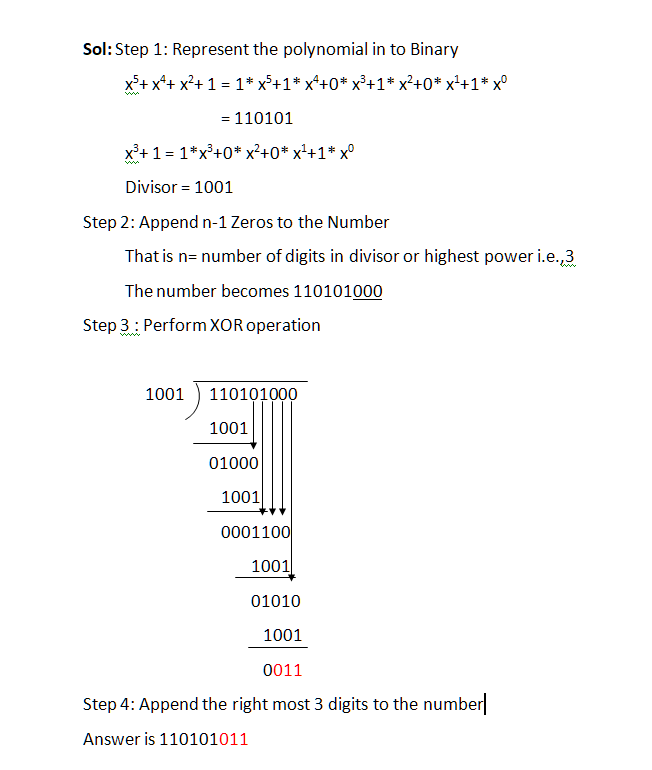

(b) Match the following to one or more layers of the OSI model. (Write the name(s) of layer(s))
Running FTP applications
Managing congestion control
Fragmentation and reassembly of packets
Encryption/Decryption
Sol: 1. Running FTP Applications --> Application Layer File Transfer Protocol used for exchanging files over the internet. It is most commonly used to download a file from a server using the internet or to upload a file to a server.
2. Managing congestion control -->Transport Layer some times Network Layer
3. Fragmentation and reassembly of packets --> Network Layer If the network layer determines that a next router's maximum transmission unit (MTU) size is less than the current frame size, a router can fragment a frame for transmission and re-assembly at the destination station.
4. Encryption/Decryption --> Presentation Layer This ensures the security of the data as it travels down the protocol stack.
(c)How is sampling done from analog signals ? Explain through an illustration.
Sol: Sampling is the reduction of a continuous signal to a discrete signal. A sample refers to a value or set of values at a point in time and/or space. The process is illustrated in the Figure

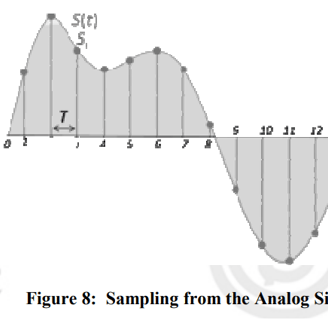
Steps in Sampling:
Original Analog Signal: Smooth continuous waveform (e.g., voice, sound).
Sampler: Takes samples of the analog signal at regular time intervals.
Sampled Signal: Sequence of pulses showing amplitude at each sampled point.
Quantization and Encoding (Next Step in ADC): Each sample is converted into binary.
(d) How many networks can each IP address class A, B and C have ? Also find the number of hosts per network in each given address class
Sol: The classes of IP Addresses are explained below.
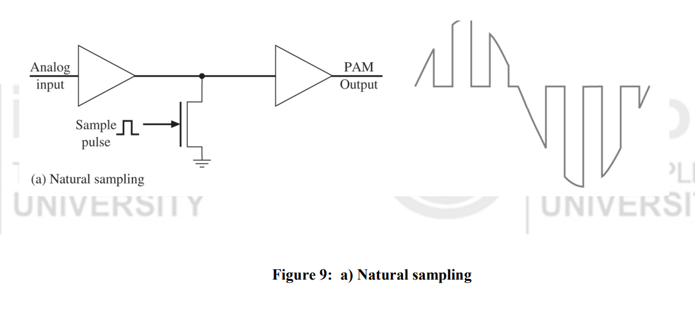

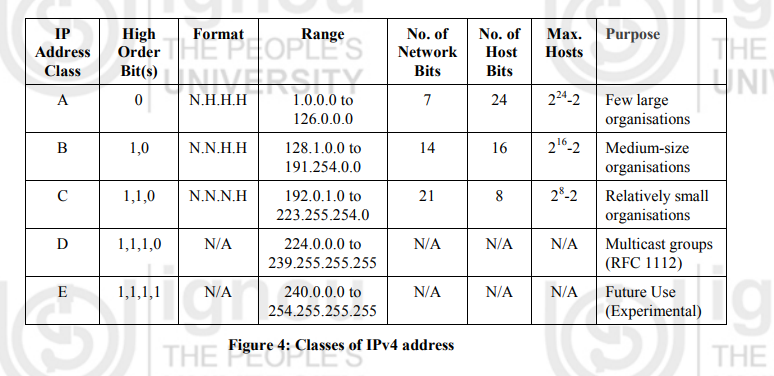


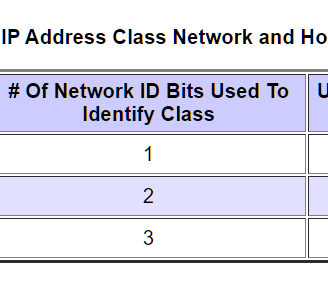
Class A: If the first bit of an IP address is 0, it is the address of a class A network. The next 7 bits identify the network, and the last 24 bits identify the host.
Class B: If the first 2 bits of the address are 1 0, it is a class B network address. The first 2 bits identify class; the next 14 bits identify the network, and the last 16 bits identify the host.
Class C: If the first 3 bits of the address are 1 1 0, it is a class C network address. In a class C address, the first 3 bits are class identifiers; the next 21 bits are the network address, and the last 8 bits identify the host.
Below table shows the details:
(e) The following Figure 1(a) is a subnet having six routers A, B, C, D, E and F.
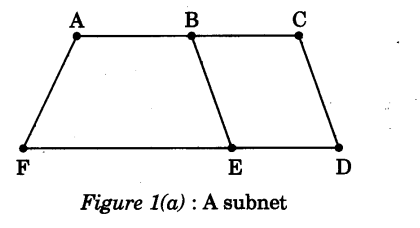

The first three columns in Figure 1(b) show the delay vectors received from neighbours of E (i.e., from B, D and F). Suppose that E has also measured its delay to neighbours B, D and F.
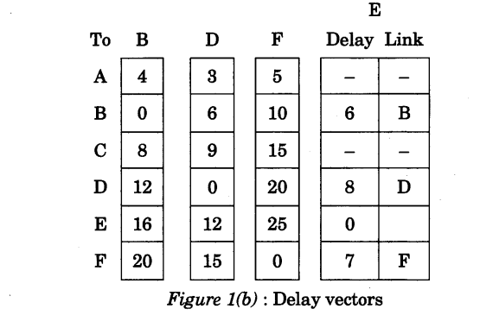

Show how the router E calculates its delay to A and C.
